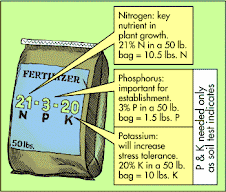 Fall is such a vibrant time of year, so colorful, bracing and chock full of events. Even though it is nature’s way of putting plant life to bed, it is our time of starting things anew. So you could be forgiven if planting bulbs for spring is really low on your list of priorities. However, by January and February, the dramatic beauty of fall is a waning memory. The hunger for spring and the cheer of flowers reaches serious proportions by March. A brief effort now and daffodils, tulips or crocuses can be peeping out around your doorway, cheering you and all who enter.
Fall is such a vibrant time of year, so colorful, bracing and chock full of events. Even though it is nature’s way of putting plant life to bed, it is our time of starting things anew. So you could be forgiven if planting bulbs for spring is really low on your list of priorities. However, by January and February, the dramatic beauty of fall is a waning memory. The hunger for spring and the cheer of flowers reaches serious proportions by March. A brief effort now and daffodils, tulips or crocuses can be peeping out around your doorway, cheering you and all who enter.Planting bulbs is not too complicated. Tulips, daffodils, hyacinth, crocus and snow drops all surface very early, poking through ice and snow. Purchase them online or at a home center. Now is the time to plant them and they can be planted until the ground freezes, usually early December. Bulbs will grow roots during the fall and winter. Select a sunny, well drained location. Avoid wet, low-lying sites. Plant them a depth of two to three times the diameter of the bulb, although this will usually be specified on their packaging. Daffodils and tulips will be planted at about 8 inches deep and smaller bulbs will be 3 to 4 inches deep.
To plant, prepare a hole to hold a few bulbs, spacing the bulbs 2 to 3 inches apart, using 10 to 15 bulbs per hole for a small area. Dig larger holes or trenches for larger areas of bulbs. This is easier than trying to dig a hole for each bulb. Bulb planters will usually bend in Kentucky clay. If you are determined to dig individual holes, consider a bulb auger, an attachment to an electric drill. This digs holes very quickly! But it does not prepare the soil as well. Otherwise, loosen the soil a few inches below the prescribed depth. Amend your soil with organic matter. Add some bone meal. The prescribed depth of the hole is measured from the bottom of the bulb. The tapered end of the bulb points upward. Cover the bulbs with soil, add two inches of mulch and water well.
After spring bloom, don’t mow the bulb foliage until it turns yellow. The foliage is making carbohydrates in the bulb to store for next years growth. Premature mowing will interrupt this process and weaken the bulb, making the next flowering smaller. The reliable return of bulbs is the part of the fun. So plant them in ground cover, around shrubs, trees or perennials. Or hide their spent foliage with annuals. Let them blend in and reward you well the following year.
Some bulbs naturalize, which means multiplying and spreading. Others do not. So if naturalizing is your wish, be sure the bulbs you buy specify naturalizing. Keep your bulbs cool, dark and dry until planting. Tuck a few bulbs into flower boxes sheltered well by your house. Imagine the cheer of spring flowers in April in your window boxes! So pick a sunny, fall afternoon and devote it to planting some bulbs. The reward in spring will return for years to come and seal the promise of yearly renewal. You will never regret a flower!




No comments:
Post a Comment